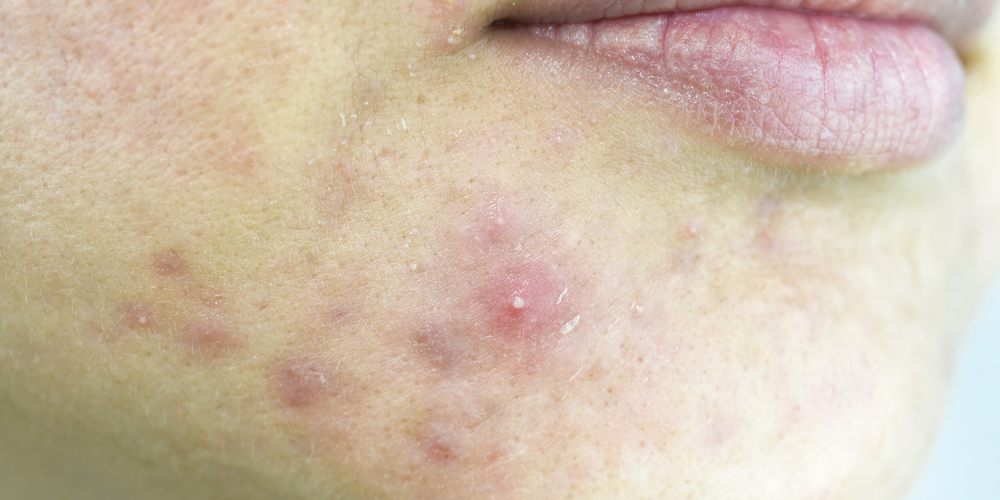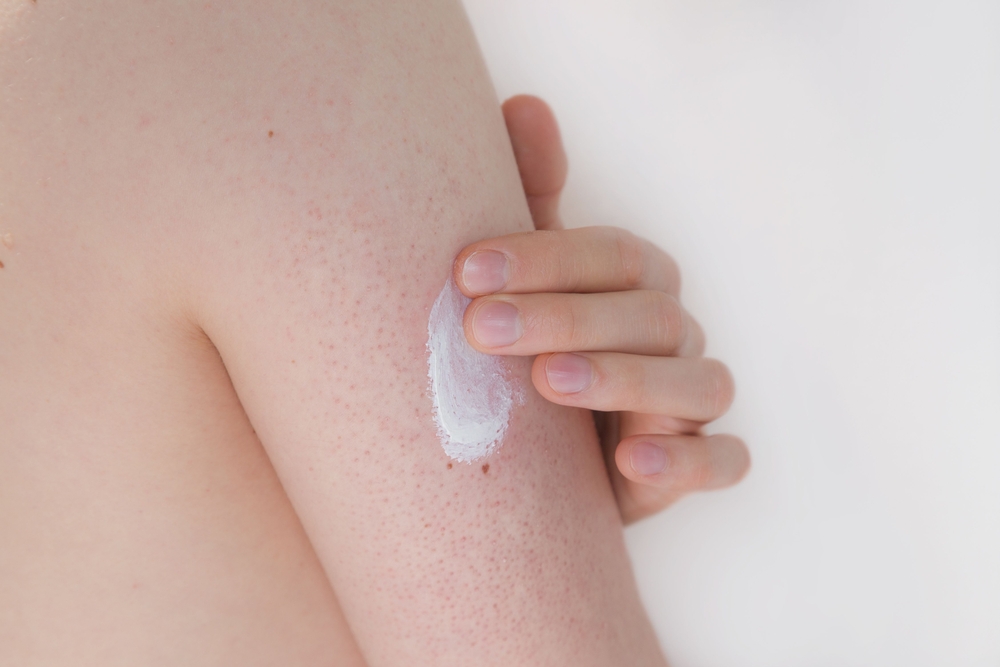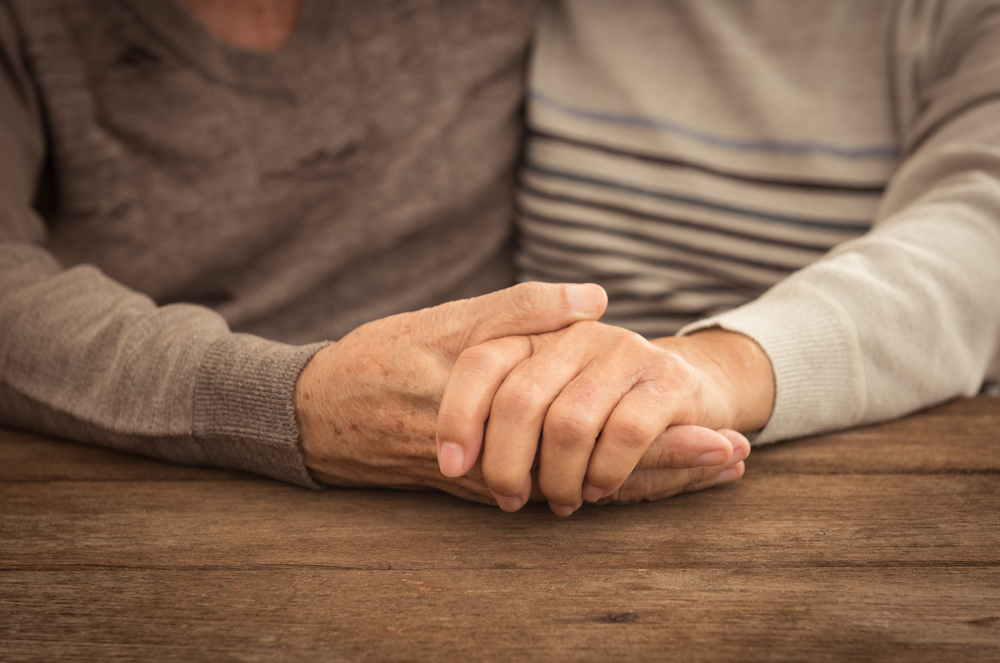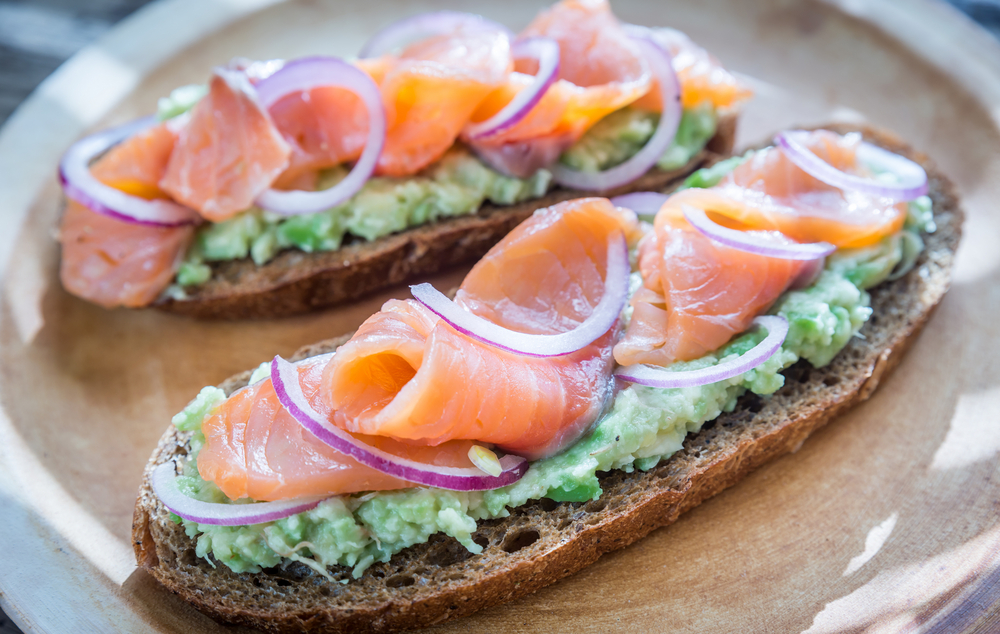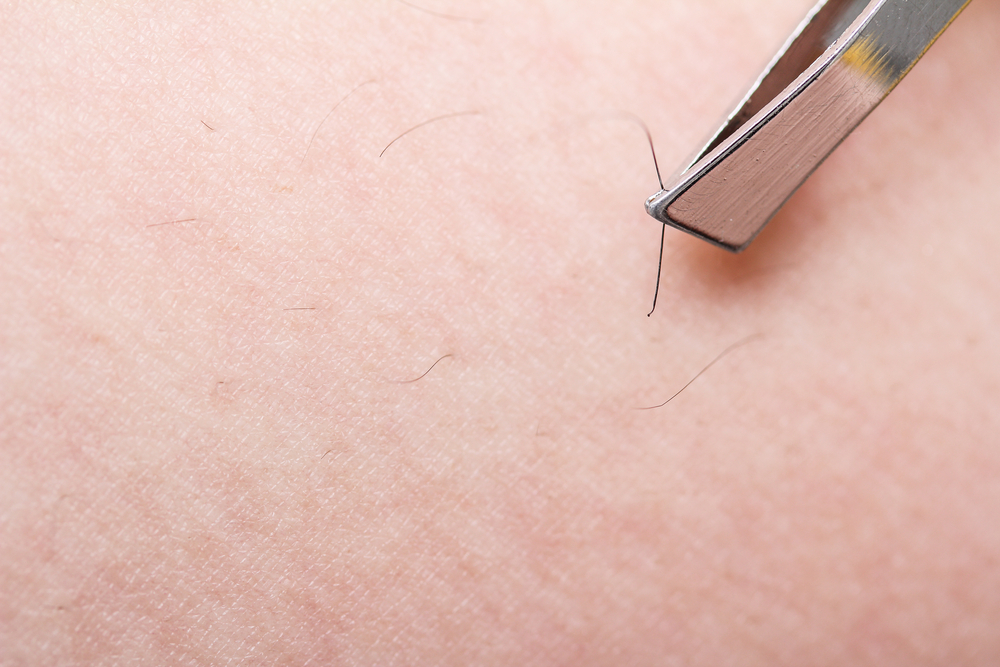- Whiteheads are closed comedones, a mild form of acne.
- While home remedies like apple cider vinegar and oatmeal scrubs may help to exfoliate sensitive skin, basic pharmaceuticals typically offer better results.
- Tretinoin and azelaic acid could help treat whiteheads in most cases.
What are whiteheads?
Whiteheads are a form of acne that appear as small raised white papules on the surface of the skin. They occur when dead skin cells, oil, or bacteria become trapped in pores and cause irritation.
This can be the result of hormone fluctuations, improper skincare, and irregular hair growth. Certain oily skin products can also encourage the appearance of whiteheads.
Whiteheads typically appear on the face, but can show up across the body. These closed comedones can cause mild discomfort or a slight pain, however they are above all a cosmetic concern. In extreme cases, whiteheads can result in scarring and skin discoloration.
Can I pop a whitehead?
You may be tempted to squeeze out whiteheads to deal with them fast, but as most dermotologists will tell you, this could actually worsen the situation.
Creating an open wound in which bacteria can thrive will make the whitehead more inflammed, more visible, and slower to heal. Furthermore, “popping the pustule can lead to scarring,” says Dr. Purvisha Patel, a cosmetic surgeon and dermatologist based in Memphis, Tennessee.
It is also worth noting that since the pustules contain concentrated bacteria, popping them can spread pus and infection to other areas, resulting in more blemishes.
Instead, Patel recommends using a comedone extractor, a specialized tool made of small stainless steel rods that can physically remove whiteheads and blackheads without causing significant damage to the skin.
Dermatologists and skin care professionals often use the tool, but it is also readily available for use at home. Although it can take some practice, it’s a relatively simple skill to learn.
Whiteheads vs blackheads
Also know as closed comedones, whiteheads consist of a dilated hair follicle containing excess oil (sebum), bacteria, and dead skin cells. When ruptured, they can cause a minor inflammation of the skin and redness in the affected area.
Blackheads, on the other hand, are clogged pores that form when a plug develops in the opening of a hair follicle and turns dark from being exposed to the air.
“Whiteheads are closed comedones filled with neutrophils and bacteria,” explains Dr. Tracy Evans, a board certified dermatologist in San Francisco, California. “They appear as red, raised or small fluid-filled bumps on the skin. Blackheads are open comedones consisting of keratin and bacteria.”
» Learn more about the differences between whiteheads and blackheads, and how the treatments differ
Home remedies for whiteheads
There are scores of whitehead remedies circulating online. From the ‘too simple to fail’ to the ‘so detailed it must work’, Evans and Patel have weighed in on a variety of homespun cures in their time.
According to Patel, certain common techniques such as applying homemade facial masks made of clay, potato, tea tree oil, or a mixture of honey and egg can actually help keep minor skin conditions in check. “These can help dry up oil to decrease blackheads and whitehead formation,” she says.
Patel also notes that other home remedies such as oatmeal scrubs and apple cider vinegar facial toners can be great for exfoliating sensitive skin. “Apple cider vinegar also has antiseptic properties to help with both blackheads and whiteheads,” she says. However, the doctor advises against applying coconut oil and olive oil when handling whiteheads. “These can make things worse if the whiteheads are caused by bacteria,” Patel says.
For her part, Evans advises against all of these purported home treatments. “These remedies are not scientifically proven to help treat or prevent acne or whiteheads,” she warns.
What is the best way to treat whiteheads?
Moving from kitchen cures to basic pharmaceuticals, Evans assures that there is no shortage of medical options when dealing with whiteheads.
“Topical treatments include tretinoin, adapalene, benzoyl peroxide, spironolactone, tazarotene, clindamycin, and dapsone,” says Evans. “Oral treatments I have used include doxycycline, minocycline, and spironolactone.”
Here are a few of the most commonly used — and misused — skin treatments for whiteheads.
Tretinoin
Tretinoin is a vitamin A derivative that is found in face creams like Renova, Avita, and Retin-A. When used topically it can help in treating acne vulgaris and closed comedones.
“Tretinoin works by speeding up skin cell turnover and exfoliation,” says Evans, “This helps to keep the pores clean, ridding them of dead cells, debris, and bacteria.”
Tretinoin can also be used to address other common skin issues, such as dark spots and wrinkles. “It promotes the production of collagen, a protein that helps to maintain the skin’s firmness and elasticity,” says Evans.
Azelaic acid
Azelaic acid is an organic compound that can be found in creams like Finacea and Azelex. Because of their antiseptic and lightening properties, these creams are used to treat common skin concerns such as whiteheads, hyperpigmentation, and rosacea.
“Azelaic acid is a medication used to treat acne and rosacea that works by decreasing bacterial load on the skin and preventing the formation of comedones,” says Evans.
Salicylic acid
While both tretinoin and azelaic acid are recommended by Patel and Evans, they hold different opinions on the use of Salicylic acid, a component of many over the counter skincare products.
“Salicylic acid can be helpful because it exfoliates and has antiseptic properties,” says Patel. However, Evans is less inclined to recommend it. She believes that salicylic acid can actually worsen certain conditions.
“In my clinical experience, what I’ve seen is that this agent tends to cause more harm than good,” says Evans. “It frequently dries out the skin, which results in the skin producing more oil, worsening acne.”
Isotretinoin
Both Patel and Evans generally warn against the use of isotretinoin, an oral retenoid, for preventing and treating whiteheads. Patel believes that while it might help, the risks outweigh the benefits.
“It is used to treat patients with severe cystic acne who have tried and failed multiple topical and oral treatment options,” says Evans. “Isotretinoin is only used in severe cases due to the side effect profile and strict follow up required when prescribing it. It can safely be prescribed by a dermatologist, but monitoring of certain blood tests and pregnancy testing is required.”
Leaving it to the experts
While over-the-counter and home remedies offer affordable alternatives to the procedures performed by dermatological experts, more sophisticated options are sometimes necessary.
“In my clinical experience I have had success in treating and preventing acne using topical and oral medications, laser treatments, and scientifically proven medical grade skin care,” says Evans. IPL and Clear and Brilliant are two of the most commonly used laser acne treatments.
If your acne doesn’t begin to improve after a few weeks of drugstore treatments, consider visiting your dermatologist for a customized skincare plan.






